When I was doing my Horticulture practicum in North Vancouver I saw many plants which were new to me. Some other plants were different, they grew more vigorously in the mild climate. I was introduced to some commonly grown plants which I was first seeing in a more wild form. One day when we taking a turn about the garden I spied a strange form of Tulip and asked what it was; I was told it was a species Tulip…much more delicate then the robust forms that are common at this time. I have been enamored of the dainty species Tulips ever since.
Many bulbs we are familiar with originate in the mountains of Central Asia and travel through Iran and Turkey and end up in eastern and southern Europe. Tulips fall exactly into this pattern. The species Tulips I am showing you today come mainly come from an area of Central Asia which is called the Tian Shan (Sky Mountains). It is part of the Himalayan orogenic belt which was formed when the Indian and Eurasian tectonic plates collided and creates the highest mountain ranges in the world. It is also through this area that the Silk Roads of ancient commerce travelled.
Tulips have come to us from those same commerce exchanges, this time from the Turkish court of Suleiman the Magnificent to the court of the Holy Roman Empire. They were brought by Ambassador Ogier Ghiselin de Bubecq. He had seen the flowers in his travels to Constantinople in 1554. We know the flowers grew in Augsburg in 1559 as they were described by Conrad Gessner. After that there was no turning back with the popularity of the flowers and they were soon in cultivation in the Nederlands. They became a symbol of luxury and were much coveted by the wealthy.
Many Tulip species have been crossed with others, in some cases this happens in the wild where species ranges of growth overlap. In most cases crosses are done to produce larger flowers with strong stems and create new color ranges. Tulips cover a rainbow of colors from nearly blue through reds, oranges and yellows to creamy white and back into plums and violets. Every shade and variation within these colors is seen.
The orginal name for Tulip is leleh which is Persian. The French Tulipe is from the Turkish ‘tulbend’ which means turban.Turkish tulbend is corrupted form of Persian dulband also meaning turban. Tulipa is the Latinate form of this Turkish word. In English the word first appeared as Tuliphant and later changed to Tulip. Are you confused now?
These speices Tulips come from mountainous areas or the vast Steppes of Central Asia. many grow on rocky slopes or in scrub, others by streams which run early in the year and later dry up. Other species come from woodlands and are slightly more lush in their growth. they dot the slopes and grssy lands like jewels blooming briefly in the cool spring sunshine.
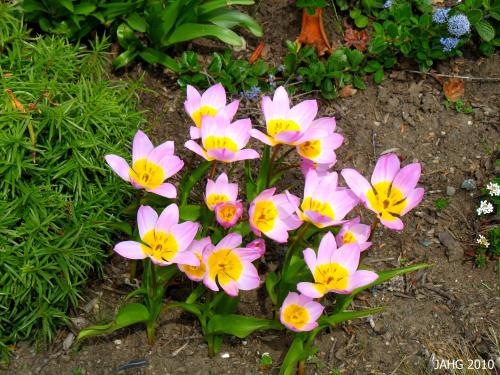
Tulipa bakeri 'Lilac Wonder' is also known as saxitilis and comes from the island of Crete. This is a light color form.
We are very fortunate that many species Tulips are easy to find and as equally adaptable to grow in our gardens. Always buy your bulbs from a reputable dealer who does not get them from wild collected supplies. It is very important we protect all species of plants growing in the wild.
It is best to grow all Tulips in rich, sandy well draining soil. The best flowers and foliage are produced by having a site which is in full sun. They need most watering during the spring when they are vigorously growing. Tulips do not like excess wetness when they are dormant over the summer into the winter. after flowering they should be left while their leaves die down and wither, after this the bulbs can be lifted and stored for later replanting. In warmer climates bulbs can be planted in the fall. Tulips generally are rated at zone 4-5 -25c(-20f).
Tulips make excellent container plants. For most impact plant bulbs in close groups. Species Tulips are generally small in overall height and should be placed near the front of a border. the are perfect in an alpine or rock garden.
Interesting Links For You:
Pacific Bulb Society has an excellent site for searching out new bulbs:http://www.pacificbulbsociety.org/pbswiki/index.php/Tulipa
Tulip history and the madness which happened:http://en.wikipedia.org/wiki/Tulip_mania
Central Asia, where so many of our treasured species come from:http://en.wikipedia.org/wiki/Central_Asia
Until we meet again along the flowering path…

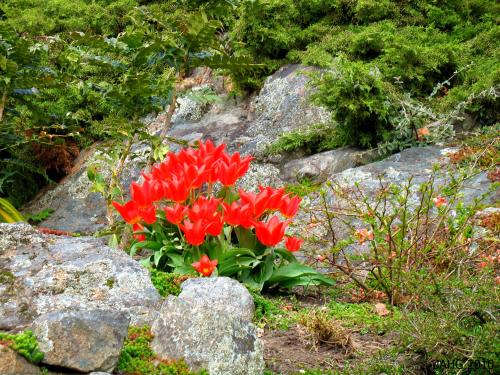
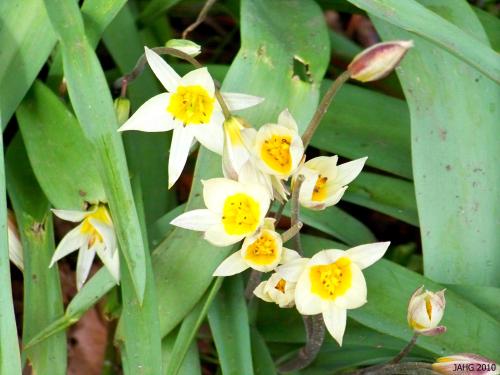
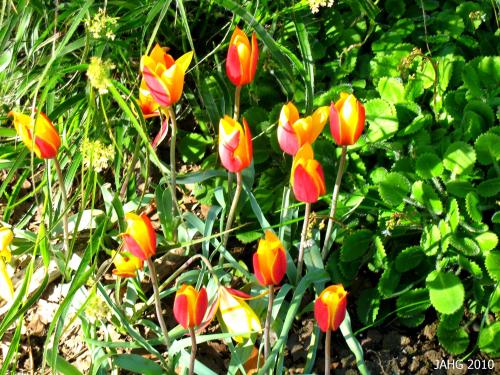
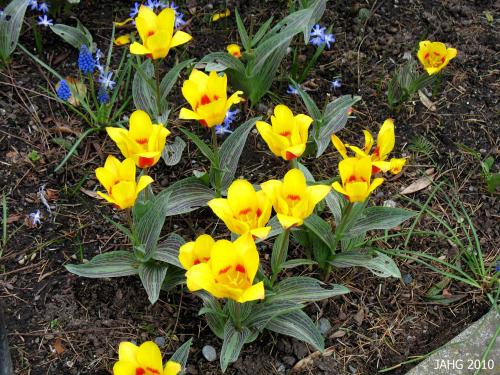
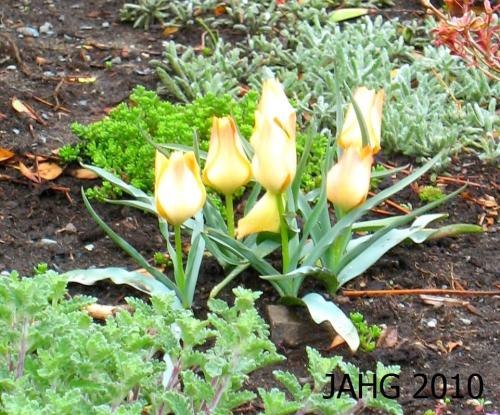
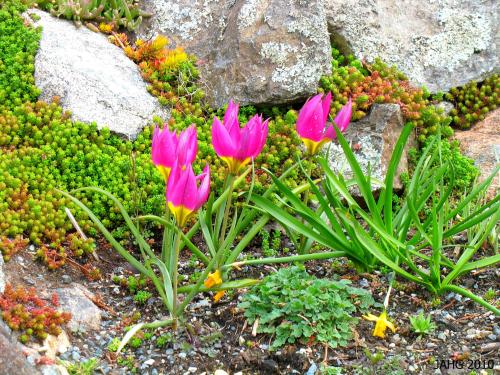
 Stumble It!
Stumble It!






